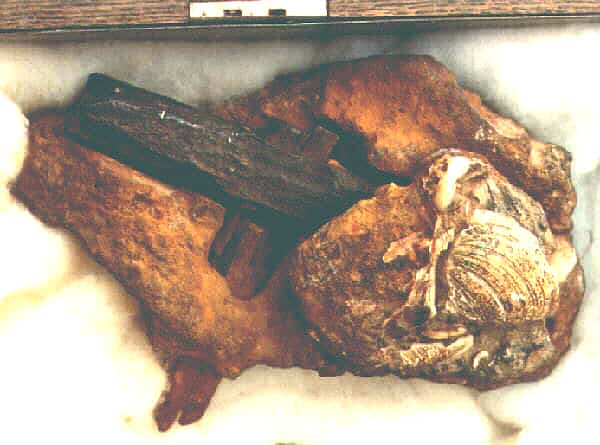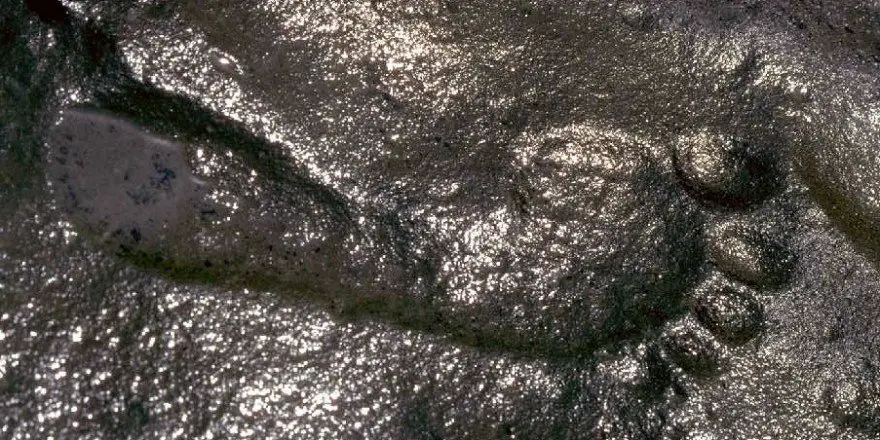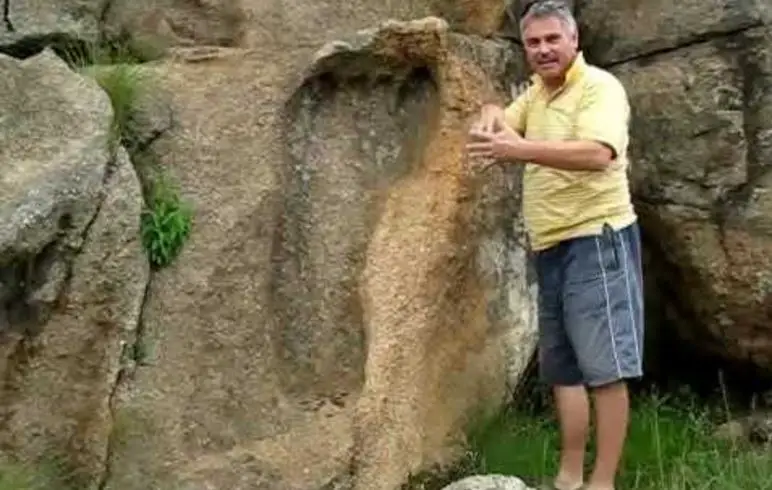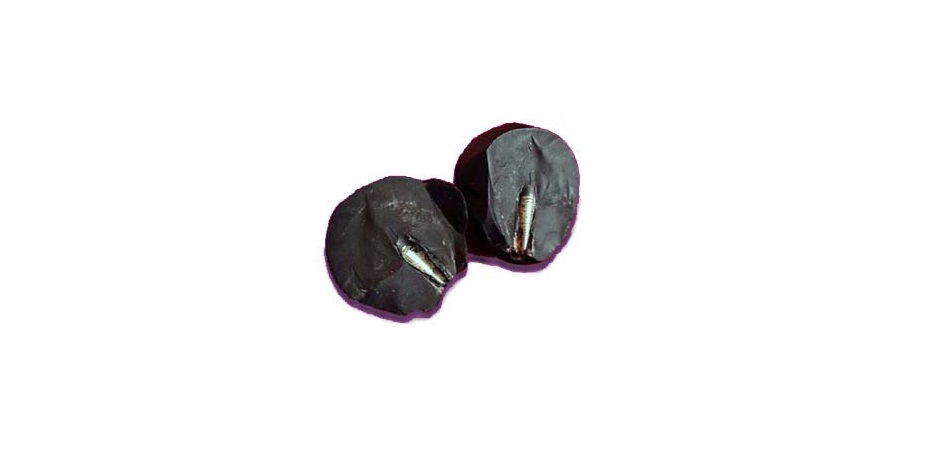Technically speaking, these artifacts should not exist, and according to mainstream science, they don’t. Yet all around the globe, a set of enigmatic objects have been found that point towards the possibility that advanced life may have flourished on Earth, before the arrival of modern humans, millions of years ago.
Despite this fact, a number of strange, and extremely ancient artifacts have been found all around the globe that ultimately question the human origins and human history.
https://www.youtube.com/watch?v=N8cXmUAzHf0
How long ago did modern humans appear on Earth? Where did we come from? And, is it possible that before the arrival of Homo Sapiens, another different species inhabited Earth, perhaps millions of years ago?
Ancient Hammer predating humans.
Let’s take a look at an artifact discovered in London, Texas, USA, in 1934. What appears to be an ordinary hammer is, in fact, a hammer embedded in stone.
What makes this extremely interesting is the age of the object; it is believed to date back 400 million years. Impossible right?

It is believed that this mysterious hammer originated from rock that belongs to the Ordovician era, more than 400 million years ago. Researchers consider that since the head of the hammer was found embedded into the rock, it points to the possibility that the embedding process was performed under different atmospheric conditions to the current, and different atmospheric pressure more similar to those in the remote past.
According to studies of the Metallurgical Institute of Columbia, the inside handle underwent the process of carbonization, the head of the hammer was built with an iron purity only achievable with modern-day technology. According to analysis, the head of the hammer consists of 97 pure iron, 2 percent chlorine, and 1 percent sulfur.
There’s a 290-million-year-old footprint, and it should not exist. Ever.

A rock belonging to the Permian period—some 290 million years ago—has a curious detail on its surface.
Discovered in New Mexico, the Permian Period rock features a human footprint. But, humans did not exist on Earth 290 million years ago, so how’s that possible? Curiously, the Permian (along with the Paleozoic) ended with the Permian–Triassic extinction event, the largest mass extinction in Earth’s history, in which nearly 90% of marine species and 70% of terrestrial species died out. Recovery from the Permian-Triassic extinction event was protracted; on land, ecosystems took 30 million years to recover.
As noted by Dr. Don Patton, the footprint is genuine. If it is, it would mean that hundreds of millions of years ago, a different type of human called Earth their home. Of course, according to scientific evidence, that’s not really possible. The Permian Period was a time way before birds, dinosaurs, and MAN, were supposed to exist.
A Giant footprint which makes absolutely no sense.

It’s huge. It’s old. It’s striking.
Located in South Africa, in the vicinity of the town of Mpaluzi, close to the border with Swaziland is a mysterious rock that has an incredible feature.
A massive granite block has a massive footprint embedded on its surface. Geologists believe that the granite block dates back some 200 million years.
This fascinating footprint was discovered over a hundred years ago when a hunter called Stoffel Coetzee stumbled across it in 1912 while hunting in the area. The footprint left behind on ‘rough granite’ measures staggering 4 feet in length.
Ok, this one isn’t an artifact, but rather evidence of many artifacts combined on Earth.
 Many researchers believe that there are several pieces of evidence pointing towards the existence of highly advanced ancient civilizations that existed on Earth millions of years ago.
Many researchers believe that there are several pieces of evidence pointing towards the existence of highly advanced ancient civilizations that existed on Earth millions of years ago.
According to Dr. Alexander Koltypin, a geologist and the director of the Natural Science Research Center at Moscow’s International Independent University of Ecology and Politology, there’s evidence of million-year-old structures scattered across the globe.
During his long career, Dr. Koltypin has studied numerous ancient underground structures mainly in the Mediterranean and has identified numerous similarities which have led him to believe that many sites were interconnected. But most incredibly, the weathering of the structures together with their material composition and extreme geological features has led him to believe these megastructures were built by advanced civilizations that inhabited Earth millions of years ago.
A 300 million-year-old screw?

Apparently, we’ve got history all wrong.
What is the chance that there are numerous objects recovered across the globe that date back millions of years? If humans weren’t around at that time, who built them?
According to reports from Chinese News agencies, a mysterious object discovered in 2002 could be evidence of prehistorical civilizations. Tests have failed to show the exact composition of the mysterious rock, researchers that include geologists and physicists from the National Land Resources Bureau of Gansu Province, Colored Metal Survey Bureau of Gansu Province, the Institute of Geology and Minerals Research of China Academy, Lanzhou Branch, and the School of Resources and Environment of Lanzhou College are unsure of the origin of the artifact and point out that at this time, all theories are possible.
According to Lanzhou Morning News; After a discussion about the possibility of being man-made and the possible reasons for its formation, scientists unanimously labeled the stone as one of the most valuable in China and in the world of collections, researchers, and Archaeological studies.”
After many studies, Chinese scientists concluded that the artifact had not been made by contemporary hands or by current technology levels, the most accepted hypothesis is that it is a product of a prehistoric civilization.

 Movie
Movie 3 months ago
88
3 months ago
88 






![Presidents Day Weekend Car Sales [2021 Edition] Presidents Day Weekend Car Sales [2021 Edition]](https://www.findthebestcarprice.com/wp-content/uploads/Presidents-Day-Weekend-car-sales.jpg)



 English (United States)
English (United States)